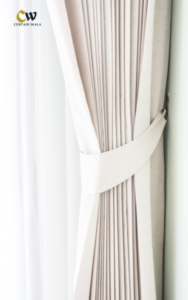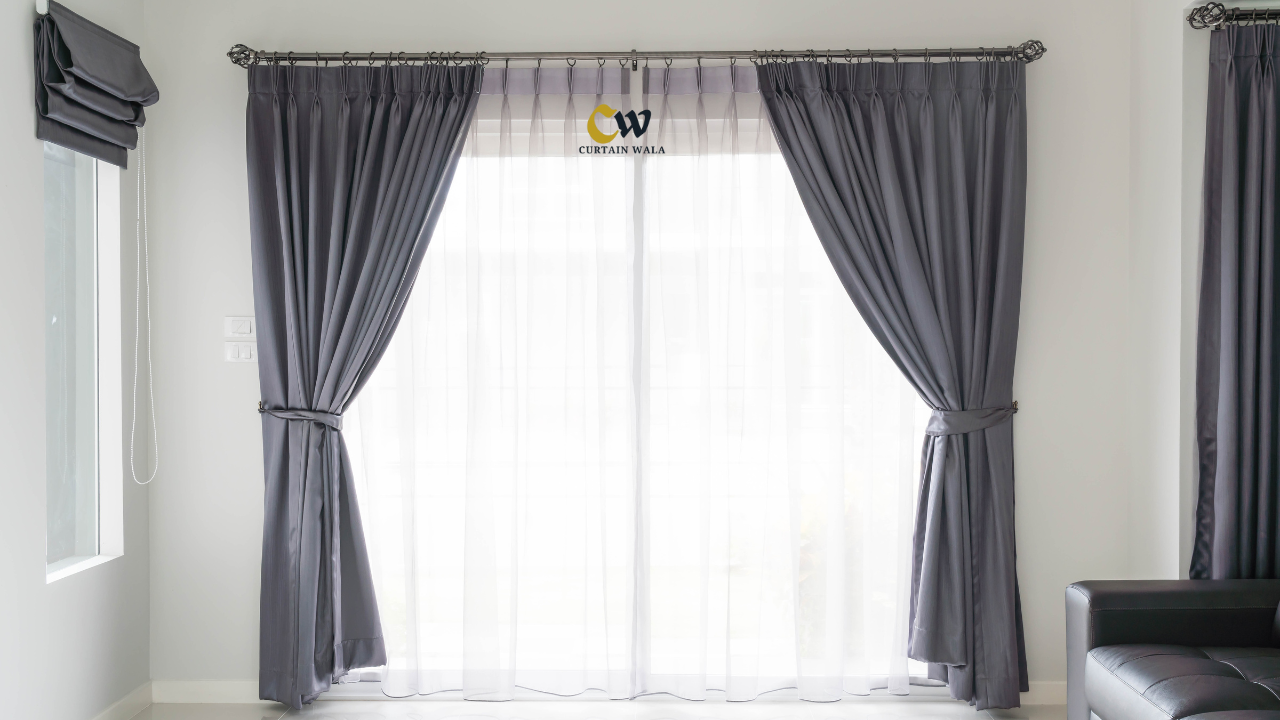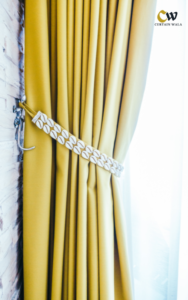
Door design problems can sometimes hinder the overall layout of the interiors and distract attention from the fact that it is completely in the wrong place. It doesn’t matter if you have a rarely used door, a storage closet or a pantry, curtains can be a beautiful, easy and inexpensive answer. In this post, we will understand how you can cover a door with curtains and why this concept known as “door curtains” could be the perfect thing for you.
Why use door curtains?
Doors can be easily covered using curtains, especially if one does not want to go through the rigorous process of extensive construction or renovation on it. They make the room more comfortable, they can blend with other items in your room and will make your room more cozy and warm. Additionally, if there is ever a need to open the door in the future, moving the curtains out of the way is no more problematic than a wall or other obstruction.
How to choose the right door curtains:
Here are some tips when choosing curtains that can cover the door effectively; The style of the curtain, the fabric of the curtain and the length of the curtain. Here’s what you need to consider:
Style:
The door curtains you choose should not look out of place in relation to what else is in the room. Today’s curtains come in a variety of styles; Modern, bohemian and classic so finding something you’ll love is no challenge. Gauzy curtains look best when one wants openness in the room; Lavish curtains such as velvet or blackout curtains are ideal for privacy as they obscure the light coming from the windows.

Cloth:
Different choices of clothes will allow to significantly change the general perception of the place. I suggest you use lighter fabrics like linen or cotton for a more casual look, while a richer look can be achieved with fabrics like velvet. For those looking for some added utility, blackout or thermal curtains will be helpful in insulating the home and regulating lighting.
Length:
For proper matching, curtains that touch the floor should be selected. Floor-length curtains create a classy image. How tall is it? Measure the height from the top of the door frame to the floor so you get the correct length of the fence.
How to hang door curtains:
Well, now that you know what types of curtains are best suited for your new home, I will tell you how to hang them. The process is actually quite easy and you just need a curtain rod and a few simple tools.
Measure and mark:
To start let’s measure across the door and then add a few inches on each side to make it a little snug. You want the curtains to extend across the entire door with no gaps in between. Measure the point where you want to place your curtain rod and make sure it is preferably slightly above the door frame so it looks like the door is higher than it actually is.
Install the curtain rod:
Using the same drill, screw in the brackets for the curtain rods at the locations you specified. Make sure it is straight and if you want to mount the rods in dry wall be sure to secure them with wall anchors. OK, make sure the bracket clicks into position, now place the curtain on the rod and fit it into the bracket.

Adjust the curtains:
When the curtains are up, tilt them at both ends to level them, where passersby or people from a distance can see. When the curtains are too long they can be cut and shortened, or a little of the fabric can be left to the floor, which is quite perfect.
Practical Benefits of Door Curtains
Apart from being one of the best design solutions, door curtains have many advantages. Here’s why door curtains are more than just a quick solution: Here’s why door curtains are more than just a quick solution:
Privacy:
If the door you are a proponent of covering is a less private area such as a storage area or laundry area, curtains prove useful in keeping the room private while still allowing access to the room when needed. ,
Sound and temperature control:
If the material is thick, it will also serve as a measure of insulation against sound and even temperature. This is mostly useful when the door leads to a cold or noisy area such as a corridor or balcony.

Lighting Control:
If you are dividing the light from another room or hallway, curtains such as black out curtains are perfect for this. They not only hide the door but they also keep out light and thus optimize the type of light that can enter inside.
FAQs:
Can I use any type of curtain to hide the door?
Yes, you can use any type of curtain to hide the door, but the best choice depends on the decor of your room and the function of the door. Sheer curtains work well for a light and airy look, while heavier curtains like velvet or blackout curtains are better for privacy and light control.
How do I measure curtains to cover a door?
Measure the width of the door and add a few extra inches on each side for full coverage. For height, measure from the top of the door frame to the floor, making sure the curtains are long enough to reach the floor for a polished look.
Do door screens block sound?
Thick curtains, such as velvet or thermal curtains, can help reduce sound. Although they won’t completely block sound, they can reduce noise coming through the door, which is helpful for isolating noisy areas.
Can I still use the door if it’s covered with curtains?
Yes, curtains are an easy-to-remove solution, so you can slide them aside whenever you need to access the door. This makes them a flexible option for doors you want to hide but still need access to.
Are door curtains suitable for all types of doors?
Door curtains work best on doors that are not used often, such as storage rooms or closets. However, they can also be used on functional doors if you choose easy-to-move curtain designs such as those on a rod with rings or grommets.




Pingback: Which Side of Door Curtains Should Face Inside? Full Guide